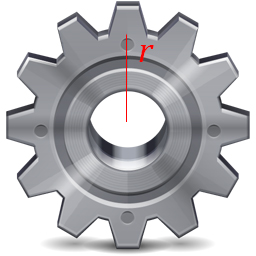I'm trying to determine the gear radius using a ruler by $cm$ but I just don't know what to measure:
1- the length from gear center point to the end of the gear tooth ?

Or
2- the length from gear center point to the start of the gear tooth ?

You have to measure the radius to the point of contact between the teeth. Now this point of contact might move as both teeth roll over each other, and the effective radius of the gear corresponds to the angularly-averaged distance between the axis of the gear and the contact point at the teeth.
If you need a quick and dirty estimate for the average radial distance to the contact point, I would suggest to take the average of the two radii you listed.
you will have to measure the radius by the second method as in first case the tooth are only for hooking with another gear the do not provide any help in rotating the system